 W
WGiuseppe Arcimboldo was an Italian painter best known for creating imaginative portrait heads made entirely of objects such as fruits, vegetables, flowers, fish and books.
 W
WAniello Ascione was an Italian painter of still lifes. He is regarded as an important representative of the Flemish style of Baroque still life painting and a follower of the Flemish painter Abraham Brueghel who worked in Naples in the final quarter of the 17th century.
 W
WJacopo de' Barbari, sometimes known or referred to as de'Barbari, de Barberi, de Barbari, Barbaro, Barberino, Barbarigo or Barberigo, was an Italian painter and printmaker with a highly individual style. He moved from Venice to Germany in 1500, thus becoming the first Italian Renaissance artist of stature to work in Northern Europe. His few surviving paintings include the first known example of trompe l'oeil since antiquity. His twenty-nine engravings and three very large woodcuts were also highly influential.
 W
WPaolo Antonio Barbieri (1603–1649) was an Italian painter who was the brother of Guercino. He was born at Cento, a village near Bologna. The subjects of his pictures are flowers, fruit, and game, but he particularly excelled in painting fish, which he represented with astonishing fidelity.
 W
WEvaristo Baschenis was an Italian Baroque painter of the 17th century, active mainly around his native city of Bergamo.
 W
WAbate Andrea Belvedere was an Italian painter of the Baroque period.
 W
WLaura Bernasconi was an Italian painter of the Baroque period, known to be active in 1674.
 W
WBartolomeo Bettera was an Italian painter, mainly depicting still lifes with musical instruments. He trained and worked under or with Evaristo Baschenis, painting the same subject matter. Works can be seen in Ringling Museum of Art, National Gallery of Slovenia, and Gallery of the Accademia Carrara in Bergamo.
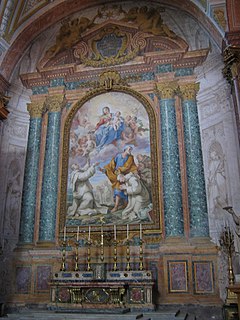 W
WPietro Bianchi was an Italian painter of the Baroque period, active in Genoa and Rome.
 W
WBartolomeo Bimbi was a Florentine painter of still lifes, commissioned by his patrons including Cosimo III, Grand Duke of Tuscany to paint large canvases of flora and fauna for the Medici Villa dell'Ambrogiana and della Topaia, now conserved in the Pitti Palace and the Museo Botanico dell'Universita.
 W
WPietro Paolo Bonzi, also known as il Gobbo dei Carracci or il Gobbo dei Frutti, was an Italian painter, best known for his landscapes and still-lifes. A cartoon of the painter shows his highly deformed lordotic posture.
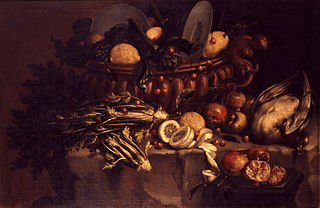 W
WFelice Boselli was an Italian painter of the Baroque period, active mainly in Piacenza. He was not the pupil of Giuseppe Nuvolone, the son of Panfilo, as some have stated, but instead of Giuseppe's brother, Michelangelo Nuvolone. In that studio, he met the still-life painter Angelo Maria Crivelli also called il Crivellone, who became influential in his style. He is known for still-life paintings of live and dead game, including animals, birds, and fish.
 W
WDomenico Brandi (1683–1736) was an Italian painter, active in his native Naples, where he painted still lifes of birds and animals, as well as pastoral landscapes (vedute) and a bambocciata. He was the son of the painter Gaetano Brandi, and Domenico initially trained with his uncle, Niccola Maria Rossi, in Naples. He later moved to work under Benedetto Luti in Rome. He was a painter to the Viceroy d'Harrach of Naples, and died in the latter city.
 W
WMargherita Caffi was an Italian painter of still lifes of flowers and fruit. She was born Margherita Volo, in Milan to Francesco Volo and his wife, Veronica. In 1668, she married Ludivico Caffi in Cremona. She settled in Piacenza in 1670. She is known to have had at least four children. She died in Milan at age 60.
 W
WFrancesco Caldei called Francesco Mantovano or Mantovani was an Italian painter, mainly known as a still-life painter of flowers, fruits, animals and musical instruments. He also collaborated on garland and allegorical paintings. He was an art valuer and may also have been active as an art dealer. He worked first in Rome and then for the rest of his career in Venice. Here his flower pieces with their Roman flavour and the pleasantness of composition earned the artist considerable commercial success with the Venetian bourgeoisie.
 W
WStefano Camogli, called 'Il Camoglino' was a Baroque painter of still lifes, animals and market and pantry scenes. He also painted small history paintings. He was a regular collaborator of Domenico Piola who was his brother-in-law.
 W
WMichele Pace del Campidoglio (1625-1669) was an Italian painter of still-life depicting fruit and flowers.
 W
WAbate, or Giovanni Agostino Cassana was an Italian painter of the Baroque period. He was a son of Giovanni Francesco Cassana and an elder brother of Niccolò and Giovanni Battista. He was born at Venice, and was initially instructed by his father. In 1670 he worked at the court of Ferdinando de' Medici in Florence and travelled regularly between the two cities, but spent at least the years 1718-1720 in Genoa, where he later died.
 W
WTito Chelazzi was an Italian still-life painter and war hero.
 W
WGiacomo Francesco Cipper, also known as Il Todeschini, was an Austrian painter in Milan from 1696 to 1736.
 W
WPierfrancesco Cittadini (1616–1681) was an Italian painter of the Baroque period, active mainly in Bologna and painting lush and rich still lifes.
 W
WMarzio di Colantonio or di Colantonio Ganassini or di Cola Antonio was an Italian painter, as a painter of still-lifes and landscapes, and fresco decorations of grotteschi and battle scenes with small figures. His still-life paintings contain hunted game.
 W
WOreste Costa was an Italian painter, active mainly painting genre scenes, landscapes, and still lifes.
 W
WBaldassarre De Caro was an Italian painter of still lifes, mainly of hunted game, but also of flowers. The mood of his paintings is often morbid.
 W
WGiorgio Duranti was an Italian painter and cleric of the Baroque period, mainly active in Brescia, where he was born. An entry in Dandolo's study of the late Venetian Republic states a 1755 as year of death, and that many of his works were in the Royal Gallery of Turin, which was the nucleus of the Sabauda Gallery.
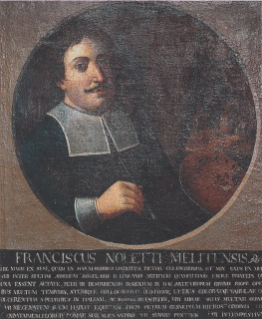 W
WFrancesco Noletti, also known as Francesco Fieravino was an Italian still-life painter. He was often referred to by his nickname, Il Maltese.
 W
WLuca Forte was an Italian painter of the Baroque period, active mainly as a still-life painter in Naples.
 W
WFede Galizia, better known as Galizia, was an Italian Renaissance painter of still-lifes, portraits, and religious pictures. She is especially noted as a painter of still-lifes of fruit, a genre in which she was one of the earliest practitioners in European art. She is perhaps not as well known as other female artists, such as Angelica Kauffman and Elizabeth Vigée-Lebrun, because she did not have access to court-oriented or aristocratic social circles, nor had she sought the particular patronage of political rulers and noblemen.
 W
WGiovanna Garzoni (1600–1670) was an Italian painter of the Baroque period. She began her career painting religious, mythological, and allegorical subjects but gained fame for her botanical subjects painted in tempera and watercolour. Her works were praised for their precision and balance and for the exactitude of the objects depicted. She was often called the Chaste Giovanna due to her vow to remain a virgin. Scholars have speculated Garzoni may have been influenced by fellow botanical painter Jacopo Ligozzi although details about Garzoni's training are unknown.
 W
WAmanzia Ammirata Guérillot was an Italian painter of French parentage; known primarily for vedute and still-lifes. Many of her works were mistakenly attributed to her first husband, Angelo Inganni.
 W
WBartolomeo Guidobono (1654–1709) was an Italian painter known for his scenes with angelic looking figures bathing in soft lighting, which show the influence of Correggio. His elegant and graceful style was very popular in Genoa. He is also known as il Prete di Savona or Prete Bartolomeo da Savona.
 W
WNicola or Nicolino or Niccolino van Houbraken, also known as Nicolino Vanderbrach da Messina and Nicola Messinese was an Italian painter of the late-Baroque who was of Flemish descent. He specialized in paintings depicting playful arrangements of fruits, vegetables, vegetation, animals, game in interiors or in forests. He also painted allegories and garland paintings. His work was appreciated by the Medici court in Florence.
 W
WAntonio Leonelli or Antonio da Crevalcore was an Italian painter, mainly of still-life painting and some sacred subjects.
 W
WBartolommeo Ligozzi was a 17th-century Italian painter who specialized in still-life paintings of flowers and genre subjects. He was the nephew of Jacopo Ligozzi. Born in Verona, Ligozzi flourished at Florence around the year 1620. He died at the age of 76.
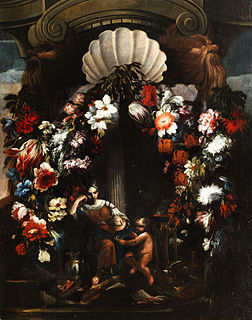 W
WGasparo Lopez was an Italian painter of the Baroque period.
 W
WCarlo Magini (1720–1806) was an Italian painter of the late-Baroque period and one of the most original of the 18th century Italian still life artists.
 W
WCarlo Manieri was an Italian painter, active in Rome. He was a specialist still-life painter and is known for his still lifes of fruit and ostentatious still lifes depicting curtains, cushions, musical instruments, armor and other objects. His work formed a bridge between the archaic arrangements of Fioravanti and the new style of Christian Berentz.
 W
WThe Master of the Acquavella Still-Life was an Italian painter, in the Baroque style, who was active in Rome during the 1610s and 20s and specialized in still-lifes.
 W
WThe Master of the Hartford Still-Life or simply the Master of Hartford was an Italian painter in the Baroque style who worked in Rome from the 1590s to the 1610s and specialized in lavish still-lifes. Together with the Master of the Acquavella Still-Life, he helped establish a brighter style for the Italian still-life, as opposed to the prevailing dark style of the Netherlands.
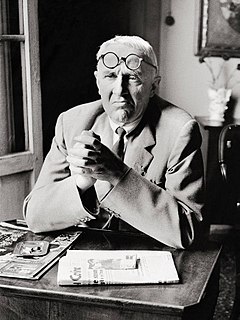 W
WGiorgio Morandi was an Italian painter and printmaker who specialized in still life. His paintings are noted for their tonal subtlety in depicting apparently simple subjects, which were limited mainly to vases, bottles, bowls, flowers and landscapes.
 W
WCristoforo Munari was an Italian painter in the Baroque period specializing in still life paintings. He was also known as Cristofano Monari.
 W
WGiacomo Nani was an Italian painter, mainly of still-life paintings and of porcelain.
 W
WFilippo Napoletano, whose real name was Filippo Teodoro di Liagno was an Italian artist, with a varied output, mainly landscape and genre scenes and also drawings or etchings of diverse, often particular, items such as exotic soldiers, skeletons of animals, or cityscapes.
 W
WPanfilo Nuvolone (1581–1651) was an Italian painter of the Mannerist period, who painted both religious and still life topics, active in Cremona and Mantua.
 W
WMario Nuzzi, who went by the pseudonym, Mario de' Fiori was an Italian painter in the Baroque style. His paintings are all based around floral arrangements; hence the name Fiori (flowers).
 W
WGiovanni Battista Passeri was an Italian painter of the Baroque period. He was a pupil of the painter Domenichino, as the latter worked at Frascati. He painted genre and still life paintings.
 W
WPaolo Porpora (1617–1673) was an Italian painter of the late-Baroque, who was active mainly in Naples and specialized in floral still lifes. He is documented as a pupil of Giacomo Recco, the father of Giuseppe Recco, and said to have worked under Aniello Falcone. He joined the Roman Accademia di San Luca from 1656 to 1658. He appears to have been influenced in Rome by Netherlandish still-life painters. Among his pupils were Giovan Battista Ruoppolo and the Neapolitan Onofrio Loth.
 W
WCarlo Antonio Procaccini was an Italian painter of the late-Renaissance period.
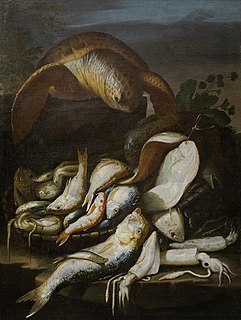 W
WElena Recco was an Italian still-life painter active in the second half of the 17th century.
 W
WArcangelo Resani (1670–1740) was an Italian painter of the Baroque period. He was born at Rome and was a pupil of Giovanni Battista Boncuore. He chiefly excelled in painting animals and hunted game. His simple realistic works were highly esteemed at Siena, Bologna, and Venice. His portrait, with dead game in the background, is in the Uffizi collection.
 W
WPasquale Ricca was an Italian painter and sculptor, with an eclectic output of portraits, genre, still-life, seascape, and landscape subjects.
 W
WGiovanni Stanchi (1608–1672) was an Italian still life painter.
 W
WSimone del Tintore (1630–1708) was an Italian painter, active in his native Lucca. He is mainly known as a still-life painter but he may also have painted religious subjects.
 W
WChristopher Unterberger, also Christoph or Cristoforo was an Italian painter of the early-Neoclassical period.
 W
WGian Domenico Valentini (1639–1715) was an Italian painter of the Baroque period. He painted still lifes.
 W
WGiovanni Domenico Valentino was an Italian painter of the late-Baroque, who specialized in a mix of genre and still life painting.
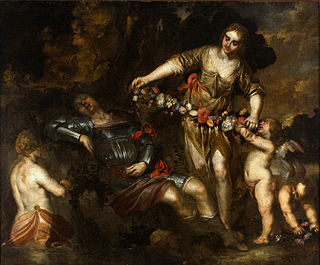 W
WAntonio Maria Vassallo was an Italian painter of the Baroque period, active mainly in Genoa, and painting mythologic scenes and still lifes.
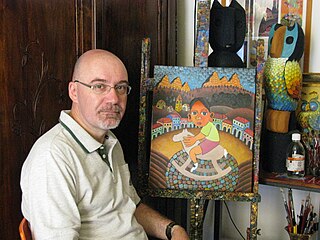 W
WGuido Vedovato Italian naïve painter and sculptor.
 W
WAgostino Verrocchi (1586-1659) was an Italian painter, mainly depicting still-life subjects during the Baroque period. He was active from 1619 to 1636 and mainly in Rome.
 W
WCandido Vitali (1680–1753) was an Italian painter of the late Baroque period. He was born in Bologna. He trained under Cignani and devoted himself to painting still lifes of animals, birds, flower, and fruit.